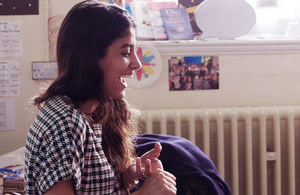Organising mixed ability pupils in smaller groups and helping those who need to catch up

A large high school in a small multi-academy trust with a higher than average number of pupils with English as an additional language (EAL) shares their approach.
We are handling the fact that pupils are working in different places. We acknowledge that the current situation presents a huge challenge. In particular it:
- affects the continuity on which our education system is built: one teacher in a classroom with pupils they know well – to cope with the need for social distancing, each subject will now be taught by 2 teachers: one remotely and one in school
- means pupils will fall into one of three ‘pods’: face-to-face (on a rota as we can only have a quarter of our year 10 and 12 cohorts on site at any one time), home learning (years 7-9), and then our most vulnerable children, who will be in school as much as staffing allows – we will be thinking very carefully about which students we put together in bubbles
- will mean watching closely to see what happens with this approach, and being ready to adapt as needs be
- means thinking about constructing bubbles partly around prior attainment
Where more disadvantaged pupils are concerned, we will have a permanent in-school pod for the most vulnerable. It will reduce the time learning remotely, but we anticipate having 15% of learners persistently disengaged. We know that around 25% are logging on to avoid being chased by school (and then not completing tasks).
We are planning:
- a full 4 days of face-to-face teaching for these pupils
- to work through long-term plans and identify the most crucial concepts for teaching
- to identify subjects and topics that underpin multiple other aspects of the curriculum
- subject teams to work on making sure what’s learned at home aligns with what’s taught in school
In history, for example, pupils can’t understand Elizabeth I unless they already have a firm grasp of the Reformation and Counter-Reformation.
Our school aims to optimise teacher face-to-face time with classroom teaching focused on the things a teacher does that cannot easily be replicated remotely.
It’s the quality of explanation, modelling and questioning that makes great teaching.
Published 12 June 2020












Responses